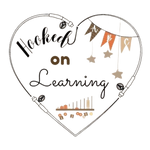
Unique Features of Montessori Materials - By Geetha
Montessori materials are specifically designed after extensive observation to foster independence, build confidence, and provide purposeful “hands on learning” opportunities to the child in order for them to reach their full potential.
There is no patent on the term “Montessori”: that means any school can call itself a “Montessori school,” similarly any material can be labelled “Montessori material”, even though they don’t meet the basic characteristics that make them unique in meeting the developmental needs of the children.
There are so many materials available all over the internet, most advertised as “Montessori” or “Montessori inspired.” Understanding the unique features that make a material ‘Montessori material’ can help us distinguish which one is real and which one is not.
Montessori materials are simple, complete, and aesthetically beautiful. They are minimalistic: have clean lines, devoid of excess features and are orderly. They are made of natural materials/wood or breakable materials to give real-life experiences to the child.
They are labelled as “Didactic”, which means they are designed or intended to teach. These are specially designed instructional materials- many invented by Maria Montessori that is a hallmark of all Montessori classrooms.
Montessori materials are designed for the multi-age grouping, as seen in the classrooms and offer opportunities to do a variety of ‘extensions’ with them. For example, a material called “Pink tower” in Sensorial area is made of 10 wooden cubes that teach the concept of dimension. A young child could build a tower with it from big too small. They can create 2-D or 3-D shapes with it, combine it with other Sensorial materials to make innovative designs, trace and pin prick or paint it. Write terms ‘big’, ‘medium’, ‘small’ etc. as language practice. The opportunities are endless, while also encouraging creativity, imagination and open-ended play-based learning.
The most ‘critical features’ of Montessori materials that distinguish them from the rest are “Control of error” and “Isolation of Difficulty”. ‘Control of error’ refers to visual completion and correction of activity done without others’ intervention. This gives the child an opportunity to determine on their own if their work has been completed correctly. One of the greatest examples of ‘Control of error’ in a Montessori material is the Knobbed cylinder. There are 4 cylinder blocks, each having 10 cylinders in them. They have different width, diameter, height, etc. Child won’t be able to fit all the cylinders properly even if one cylinder is out of place.
Similarly Spindle box work in Math has a spindle tray and 45 spindles, just enough to fill in for numbers 1-9. There are no extra spindles in that work. These materials with an inbuilt ‘Control of error’ help child check their own work, building their confidence and self-esteem. Isolation of difficulty: Helps ‘hone in on 1 skill’ at a time by removing all other elements that could be distracting to the child to facilitate confidence and mastery. For example, Pink tower, a Montessori material in the Sensorial area teaches the concept of “Size.” So, all cubes are made of wood and are of the same colour – pink. They only differ in size.
Pink tower only teaches the concept of ‘Big and small’ and not the weight or colour or length etc. Hands-on exploration of ‘1 specific trait’ in the materials encourages the child to work with them for long periods of time in order to figure out a variety of ways to decipher it. This eventually helps build focus and concentration in the child.
In summary, if you are looking to buy a Montessori material or DIY one, ensure that ‘Control of error’ and ‘Isolation of difficulty’ is incorporated into it.
Authored by Geetha of @montleathome (Instagram)

Leave a comment